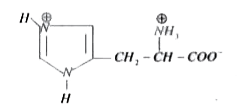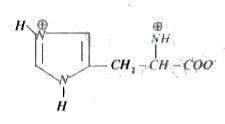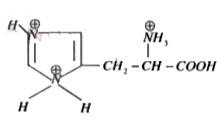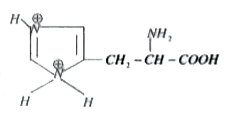A
B
C
D
Text Solution
Verified by Experts
The correct Answer is:
|
Topper's Solved these Questions
PROTEINS AND NUCLEIC ACIDS
AAKASH SERIES|Exercise PRACTICE SHEET - 4|30 VideosView PlaylistPROTEINS AND NUCLEIC ACIDS
AAKASH SERIES|Exercise PRACTICE SHEET - 2|30 VideosView PlaylistPRINCIPLES OF METALLURGY
AAKASH SERIES|Exercise SUBJECTIVE EXERCISE-2 (LONG ANSWER QUESTIONS )|7 VideosView PlaylistREDOX REACTONS
AAKASH SERIES|Exercise Questions For Descriptive Answers|27 VideosView Playlist
Similar Questions
Explore conceptually related problems
Knowledge Check
Similar Questions
Explore conceptually related problems
AAKASH SERIES-PROTEINS AND NUCLEIC ACIDS -PRACTICE SHEET - 3
- Histidine, a hetro cyclic amino acid has following structure at p^(H)l...
02:37
|
Playing Now - The Pka values for 3-Ionisable groups x, y, z of glytamic acid are 4.3...
01:49
|
Play - The enzyme Ptyalin used for the digestion of food is present.
01:50
|
Play - Which of the following set contain only essential only essential Amino...
03:19
|
Play - Which of the following has Imidazole ring
01:34
|
Play - The 10% energy transfer law of food chain was given by
02:06
|
Play - Which of the following test is used to test for peptide linkage
04:56
|
Play - Which of the following protein destory the antigen, when it enter in B...
04:05
|
Play - Peptides are composed of amino acids joined by amide bonds. Which of t...
02:33
|
Play - Optically active aminoacid is/are
02:41
|
Play - Which of the following aminoacids can be obtained when sample of prote...
01:53
|
Play - Which of the following statement is/are true ?
05:00
|
Play - Which of the following/s are not belongs to L - serine
03:18
|
Play - Excess of Na^((+)) ions in human body causes.
02:58
|
Play - Which of the following aminoacid does not contain S - atom
01:39
|
Play - Among the following fatty acid/s are
01:33
|
Play - The reducing agent 'x' is
02:50
|
Play - The halide 'y' will be
02:43
|
Play - The product 'z' will be is
02:07
|
Play - An analysis of the hydrolysis products of salmine, a polypeptide from ...
01:34
|
Play



